A strikingly beautiful multicolored bird known to be a frequent visitor to feeding stations bringing extra color to many a garden.
Meet the Green Headed Tanager
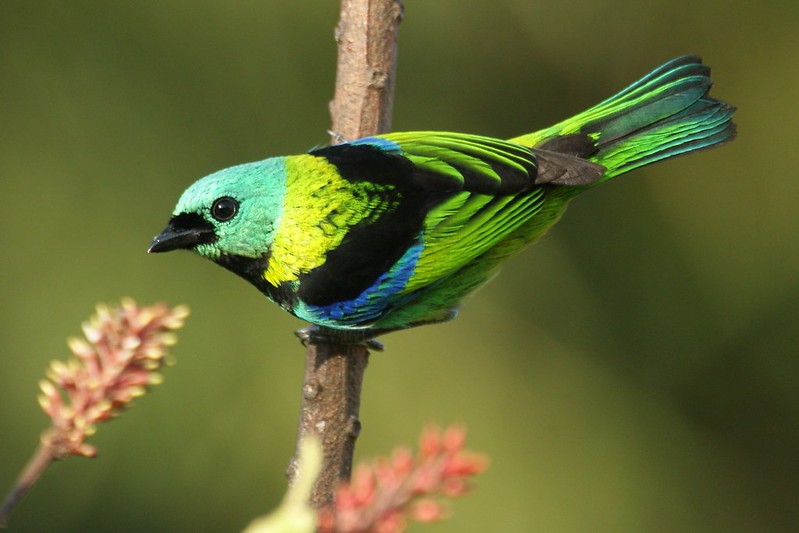
Photo Courtesy of Ben Tavener / CC BY 2.0
The green-headed tanager (Tangara seledon) is a small colorful bird that mainly visits the humid Atlantic forest. And contrary to what you might think, its flashy plumage is great camouflage amongst the local vegetation. The adult male shows bright complex plumage. The head, nape, and chin are bright aquamarine-green. A pale yellow-green broad band crosses the nape and the upper mantle and extends around the neck sides to the throat. The back and scapulars are black. The rump is orange-yellow whereas the upper-tail-coverts are bright apple-green. The tail is black with pale green edges at the base, turning turquoise-blue distally. The upper wing coverts are dark violet-blue. The flight feathers are black with broad pale green edges. On the underparts, the lower throat and the upper breast are black. The breast and central belly are bright turquoise-blue, whereas the sides of the belly, flanks, and under tail-coverts are bright apple-green. The bill is black with a black base. The eyes are dark brown with black eyering.
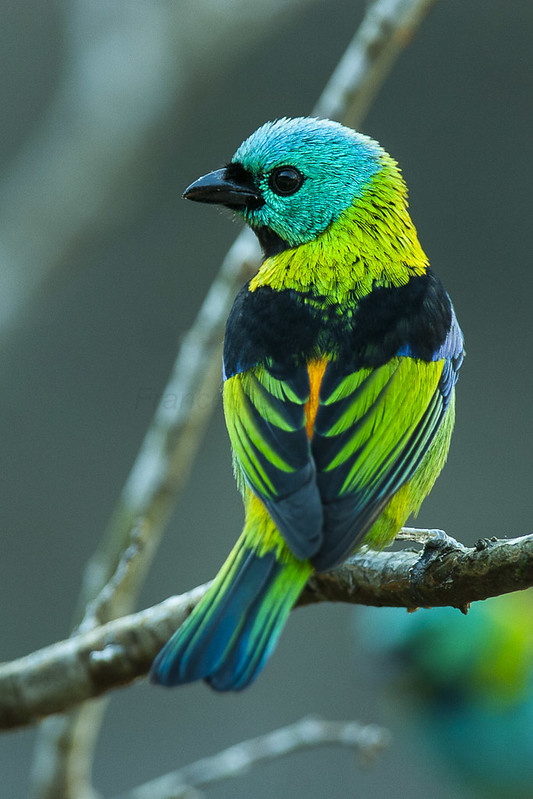
Photo Courtesy of Francesco Veronesi / CC BY-SA 2.0
The legs and feet are blackish-grey.
The female has almost similar plumage but she is slightly duller overall. Immature birds are much duller than adults.
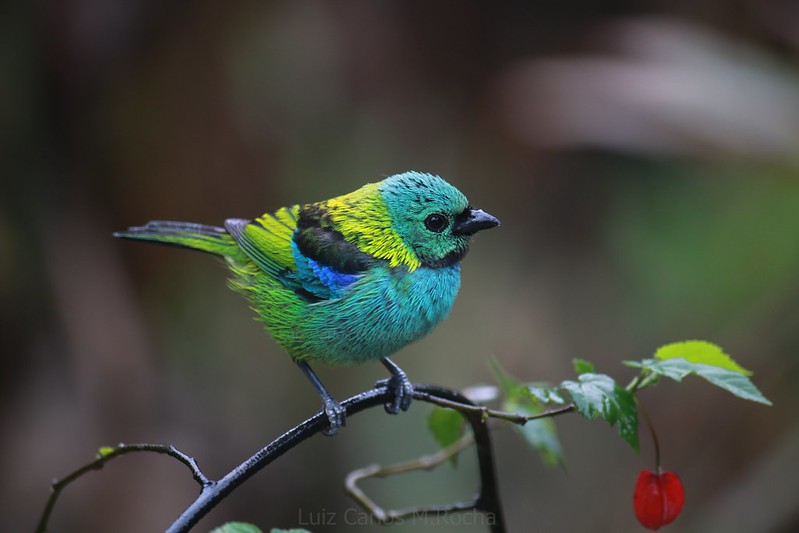
Photo Courtesy of Luiz Carlos Rocha / CC BY-SA 2.0
The Green-headed Tanager is found in SE Brazil and adjacent parts of SE Paraguay, and NE Argentina.
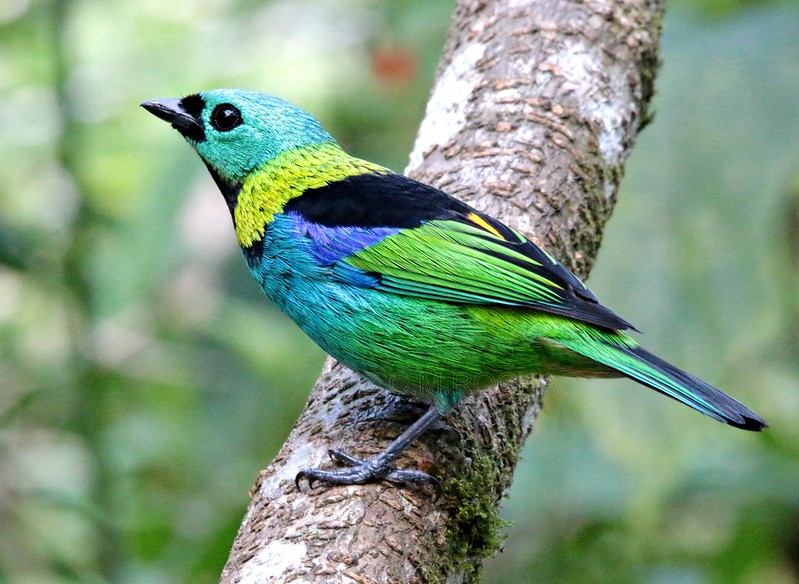
Photo Courtesy of Luiz Carlos Rocha / CC BY-SA 2.0
This strikingly beautiful multicolored Tanager is small (Length: 13 cm, Weight: 16-20 g) and colorful and is usually found in humid Atlantic forests. It is also common in orchards, parks, and gardens, even near human settlements. It also frequents the forest borders and the clearings where it finds some trees and shrubs, and also secondary growth.
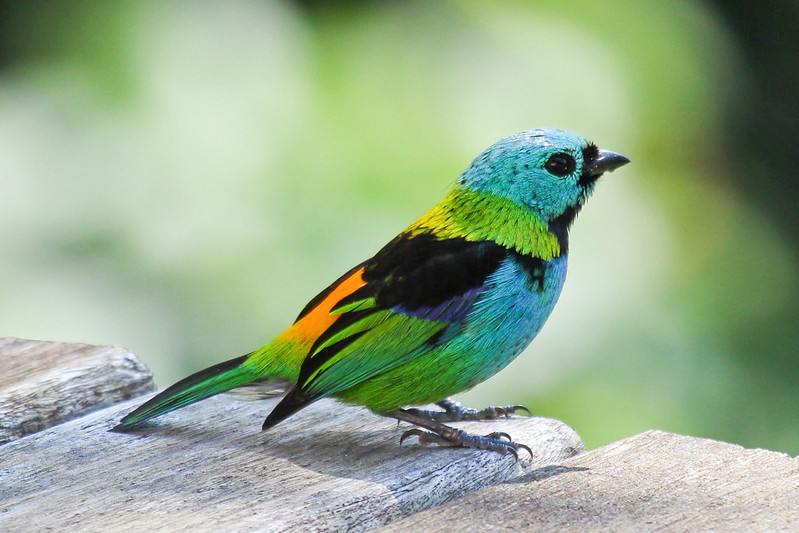
Photo Courtesy of Lars Falkdalen Lindahl / CC BY-SA 2.0
The Green-headed Tanager likes to dine on fruits and arthropods. The fruits include a wide variety of cultivated and wild fruits and berries from Bromeliads. This species can be seen in pairs or in small groups, sometimes up to 20 birds.
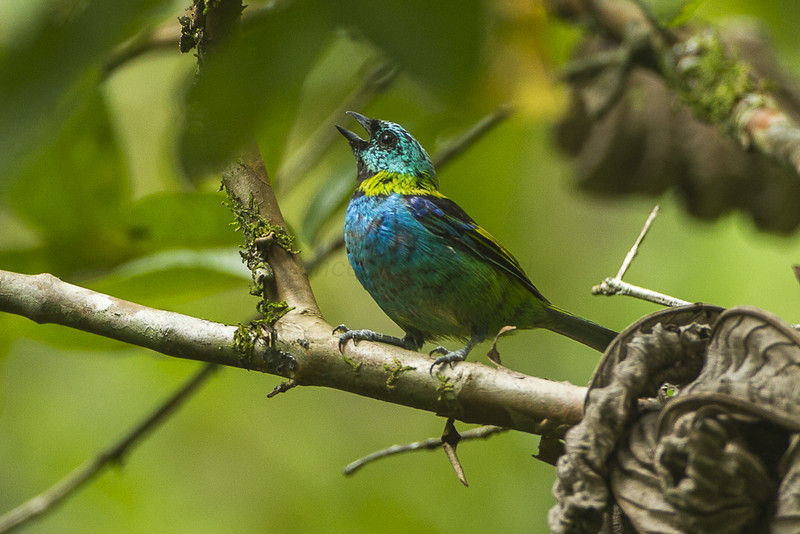
Photo Courtesy of Francesco Veronesi / CC BY-SA 2.0
This small bird is very active when foraging, performing some acrobatic movements while hopping along branches, gleaning from leaf surface and bark, and from vegetation. It also inspects the sides of the bare branches by leaning down several times. It is able to manipulate the fruits with the bill, in order to remove the seeds and reach the pulp.
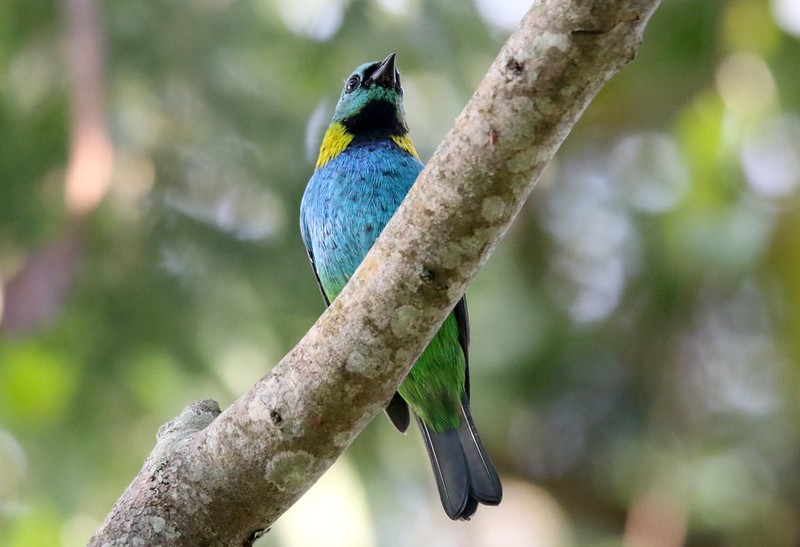
Photo Courtesy of Dominic Sherony / CC BY-SA 2.0
The breeding season occurs between November and February in Brazil, and November and December in Paraguay, as well as in November in NE Argentina. The Green-headed Tanager is monogamous, though breeding pairs are accompanied by helpers, probably young from the previous broods. The nest is a compact cup built by both adults with grass and leaves and lined with soft materials. This nest is usually hidden in the vegetation, in the foliage of trees or scrub, or in plants along trunks and branches. But a single adult pair is involved in nest-building, egg-laying and incubation. The female lays 2-3 pale eggs, pinkish-white with brown and grey markings. The incubation lasts 13-14 days and is done by the female. The male may feed the female away from the nest, or occasionally at the nest. The young fledge about 14-18 days after hatching. They still depend on their parents for food for several weeks after fledging.
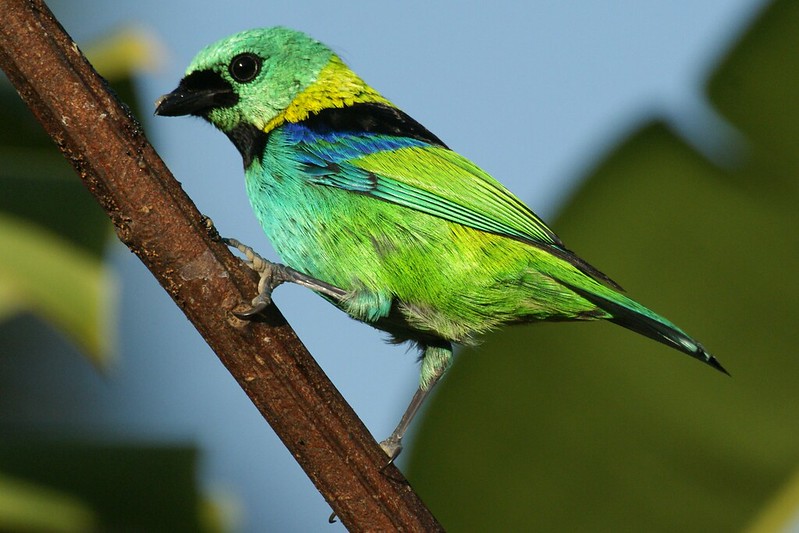
Photo Courtesy of Ben Tavener / CC BY 2.0
The Green-headed Tanager is uncommon to fairly common locally. This species has disappeared from large recently deforested areas, and it is also absent from remnant woodlands in SE Brazil. This suggests that their distribution is today highly fragmented. The populations are often confined to protected areas. However, this species is not currently threatened.

Photo Courtesy of Luiz Carlos Rocha / CC BY-SA 2.0
You can watch and listen to this bird right here in the video below:




